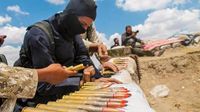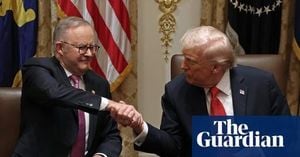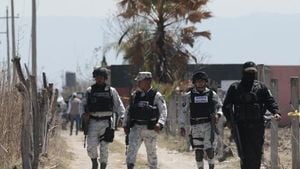In the tense aftermath of a recently brokered ceasefire, the Gaza Strip finds itself once again at the center of international scrutiny. Despite the pause in open warfare between Israel and Hamas, the territory remains gripped by violence, fear, and a struggle for control that threatens to unravel the fragile peace. Reports from Palestinian media, international observers, and statements from global leaders reveal a Gaza where the guns are quieter, but the streets are far from safe.
According to the Palestinian Authority’s official newspaper, Al-Hayat al-Jadida, Hamas militants have wasted little time reestablishing their presence inside hospitals and schools across Gaza. These civilian infrastructures, which were previously neutralized by the Israel Defense Forces (IDF) during its two-year campaign, are now reportedly being used to interrogate Gazans accused of collaborating with Israel. The practice is not new; as highlighted by the Washington Free Beacon and analysts like Joe Truzman of the Foundation for Defense of Democracies, Hamas has a notorious history of using United Nations-run schools and hospitals as military outposts and arms depots—tactics that maximize civilian casualties and international outrage.
"Hamas is working to restore its pre-war status, and its reoccupation of hospitals and other civilian sites fit that pattern," Truzman told the Washington Free Beacon. He noted that Israeli military intervention is unlikely, given the leadership’s desire to preserve the ceasefire and avoid reigniting large-scale conflict. As Palestinian Media Watch observed, "Hamas is taking advantage of Israel’s constraints to rebuild its terror infrastructures and rule across the Gaza Strip."
The ceasefire, which went into effect following an agreement struck on October 13, 2025, has not brought an end to violence inside Gaza. Instead, it appears to have shifted the battleground. In the days that followed, videos began circulating online that purportedly show Hamas executing members of various armed clans, including the powerful Doghmush family. These executions, often conducted in public without any semblance of a legal process, have sent shockwaves through the territory. At least 32 Palestinians have been publicly executed, with some reports putting the number of Doghmush clan victims at 52.
Hamas claims these individuals were "collaborators" with Israel, yet, as noted by journalist Khaled Abu Toameh in Gatestone Institute, the group has provided no evidence to support these accusations. "Hamas has not provided any evidence that many of those who were blindfolded, forced to kneel, and executed extrajudicially in the street... were linked in any way to the Israeli security forces," Abu Toameh wrote. The executions, he argues, are less about rooting out spies and more about eliminating critics and consolidating power.
The roots of this latest crackdown stretch back to the devastating events of October 7, 2023, when an estimated 3,000 Hamas fighters crossed into southern Israel, killing approximately 1,200 people and taking 250 hostages. Israel’s overwhelming military response over the next two years claimed more than 68,000 lives in Gaza and left over 170,000 wounded, according to the Gaza health ministry. The stated aim was to destroy Hamas as both a governing and military force, but as Israeli troops have withdrawn under the terms of the ceasefire, an estimated 7,000 Hamas fighters have reemerged across the territory, seeking to reestablish a monopoly on force.
Hamas’s campaign has targeted not only alleged collaborators but also the powerful clans that have long played a dual role in Gaza—as community leaders and, at times, as local mafias. During the chaos of war, these clans settled old scores and expanded into racketeering, drug dealing, kidnapping, and extortion. Israeli Prime Minister Benjamin Netanyahu has acknowledged that Israel armed some of these gangs, hoping they would turn their weapons against Hamas. Instead, the resulting power struggle has only deepened the territory’s instability.
In an effort to reassert control, Hamas has offered amnesty to clans and gangs willing to surrender their weapons and face trial for criminal activity. The Doghmush and Majaydah clans have reportedly complied, but not before suffering heavy casualties in clashes with Hamas forces. The largest assembly of clans, the Palestinian Tribal Committee, has voiced support for Hamas’s crackdown, condemning the criminality that has flourished in the security vacuum.
For ordinary Gazans, the situation is fraught with fear and uncertainty. Some, as reported by sources within Gaza to international researchers, believe that Hamas’s show of force could pave the way for the reestablishment of law and order and allow for the effective distribution of desperately needed humanitarian aid. Hamas, for its part, is seeking to retake control of these aid channels, summoning employees of international agencies to glean information about aid amounts and distribution methods. The group has imposed new levies and tariffs on humanitarian aid and established a department to oversee these revenues—an echo of past practices that have filled Hamas’s coffers at the expense of the population.
President Donald Trump’s peace plan, unveiled in early October, calls for Gaza to become a "de-radicalized, terror-free zone" and offers amnesty to Hamas members who disarm and commit to peaceful coexistence. While Hamas has released the 20 living hostages and returned some bodies since the plan’s announcement, the reality on the ground is starkly different. Trump has warned, "This is a very violent group of people, and they got very rambunctious, and they did things that they shouldn’t be doing. And if they keep doing it, then we’re going to go in and straighten it out, and it’ll happen very quickly and pretty violently. Unfortunately, we are going to eradicate Hamas."
Despite these threats, Trump also acknowledged the complexity of the situation, telling reporters on October 14: "Well, they [Hamas] are standing because they do want to stop the problems, and they’ve been open about it, and we gave them approval for a period of time." This temporary green light for Hamas to reestablish order reflects a grim calculation: stability, even if enforced by violence, is seen by some as a prerequisite for humanitarian aid and civil administration to function.
Yet, as Hamas continues its campaign of extrajudicial killings and public executions, the international community has remained largely silent. Abu Toameh notes that this apathy sends a dangerous message to Palestinians: dissent against Hamas will be met with death, and the world will look away. Hamas’s leadership, meanwhile, remains defiant. In a statement marking the first anniversary of Yahya Sinwar’s death, the group reaffirmed its commitment to resistance and the goal of a fully sovereign Palestinian state with Jerusalem as its capital. Its rhetoric and actions leave little hope for the de-radicalization envisioned in the Trump plan.
As Gaza teeters between the possibility of peace and the reality of renewed authoritarian rule, the choices of its leaders—and the responses of the international community—will determine whether the territory can break free from the cycle of violence and retribution that has defined its recent history.





